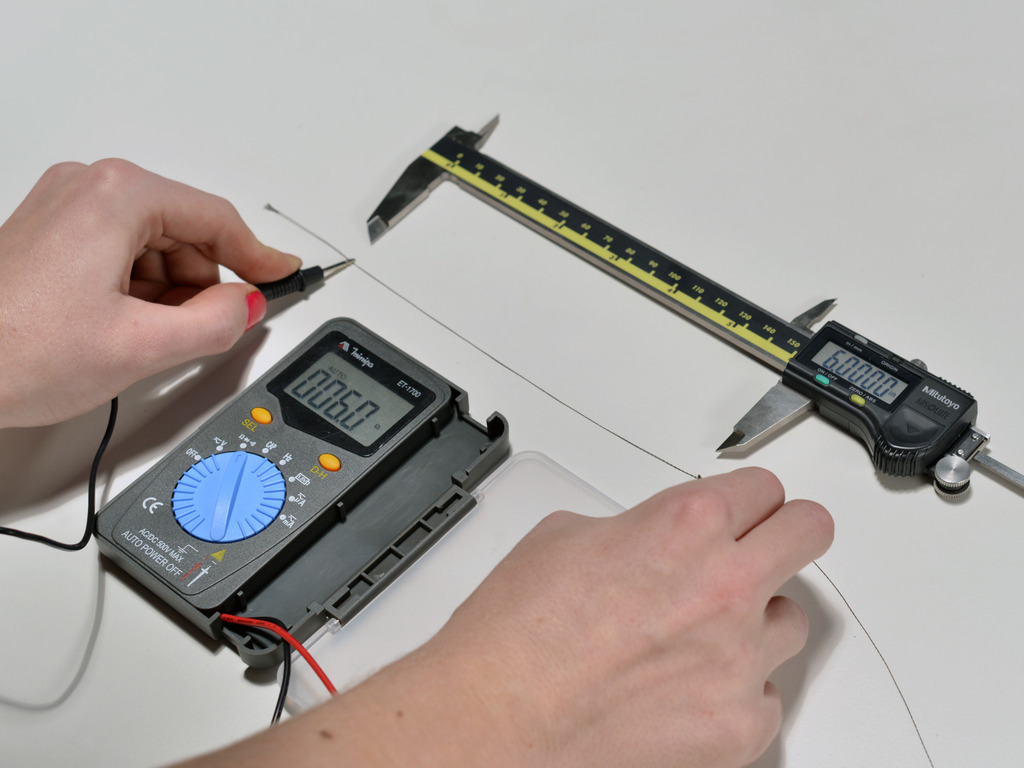E-Textiles 101
This page is a guide to different techniques that can be used in electronic textile design, places to source materials, and possible sources of inspiration/research references.
Resources
A fantastic resource for most e-textile related ideas and tutorials is How To Get What You Want, aka the KOBAKANT art collective DIY wearable technology documentation site. I'd strongly recommend just browsing around the site -- they have some great detailed guides, including knitted sensors, robust hard/soft connections, textile speakers, and using conductive velcro as a switch.
Materials
Conductive Thread
It's better to think of conductive thread as a long resistor than a traditional cable. All conductive threads come with an associated resistance per unit length, and this can vary a lot between different brands and thicknesses. For a ballpark figure, Adafruit's 2 ply conductive thread is made of stainless steel, and has a resistance of 16 ohms/foot. If you're unsure of which brand you're using, you can always use a multimeter to measure it.
Adafruit have a short conductive thread tutorial that covers basics like hand- and machine-stitching, and steps to prevent short circuits.
Conductive Yarn
Conductive yarn is different to conductive thread: it has much higher resistance, which makes it inadequate to directly connect components unless they are very close together or the knitted yarn is stretched, but it is well-suited to pressure sensing.
When a knitted sample is held loosely, it has a high resistance as the steel fibres in the yarn do not make contact with one another, but when the sample is stretched, the steel fibres are pulled into closer contact, reducing the resistance and allowing the flow of an electric current.
Conformable Connections
Conformability is key to making robust e-textile projects, and is particularly relevant to projects using conductive thread
Sourcing Materials
- How To Get What You Want has a really good, long list of 'Basic E-textile Materials', as well as detailed reviews for materials such as Conductive Yarn, Conductive Paint/Ink, and Piezoresistive Fabrics
- Sparkfun has an e-textiles section that includes conductive thread, Lilypad and Chibitronics kits, pressure sensors and conformable data busses.

